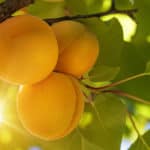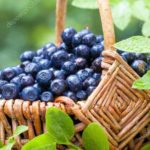This tuber vegetable has a variety of species and is known for its sweet starchy texture, cultivated in warm and tropical climates. Yams are a vegetable known across the world with many uses in different cultures. In Okinawa, Japan, they have purple sweet potatoes termed “Ube,” purple Yams. Malaysia and Singapore use Yams in many recipes, known as “taro.” In New Zealand, the yam is typically referred to as “oca,” and in the U.S., we coin our orange-fleshed sweet potatoes as “yams.”

Native to the Americas, Asia, and Africa, yam tubers can grow up to 15 meters in length and are dispersed by seeds. The skin of this vegetable is tough to peel off, but it softens after heating. The skin can vary in color from a dark pink to light brown. The “meat” or inside of the vegetable can vary from yellowish to purple, or even pink in mature yams.
There is a major production in the farming of yams, and Africa is leading in the market by a landslide. Annual festivals were held in the southeastern region of Nigeria for centuries because of the dominant role it played in the farming culture.
Proper storage of tuber vegetables can be very simple. The two most important factors are to store them in a dark, ventilated area to protect them from sunlight and to keep them stored in a low temperature. Yams are still living after they have been harvested, so they will continue to respirate, which causes heat. Respirating also causes oxidation, which turns into water and the dry, starchy matter of the vegetable is significantly reduced, so you want to make sure that the area is also properly ventilated. Make sure you check on them once every couple of days if you are storing them for a long time because once the tuber vegetable has started sprouting, the respiration rate almost doubles and rapidly decreases the value of the vegetable.
There is not much nutritional value in a yam, but in some cultures, it is a very important dietary supplement. The potassium and vitamins in cooked yams are low; however, raw yams have the highest potassium levels in the top 10 major vegetable staples (but who wants to eat raw yams, am I right?). Yams are also not a good source of essential amino acids or protein.
I know I mentioned that raw yams provide the highest levels of potassium, but it is also known that eating raw yams is highly unsafe in some areas of the world, which is why we’re going to go over some of the cooking methods in many different cultures. In the Ghana region of Africa, yams are boiled and mashed with oil, lightly fried, and served with eggs known as matoke. The northeastern coastal region of Brazil prefers them to be boiled, sliced, and fried and served at breakfast along with a cheese spread. The purple “Ube” species of yams in the Philippines and Costa Rica is popularly known as an ingredient in their ice cream. Indonesian cuisine also prepares the same purple yam in a dessert manner, mashing the yam and mixing with coconut milk and sugar.

I’ll leave off with my favorite way to prepare yams. It’s a very pretty and interesting dessert that is made from the “Ube” (purple yams). Boiled and mashed, then cooked with butter, coconut and condensed milk, and sugar. Topped with macapuno strings (dried coconut slices), it’s a refreshing and fattening dessert. Very tasty, though!
Feel free to contact me if you have any culinary ideas of your own! I’ve explored many traditional and modern culinary techniques. I love to get my hands on fresh ingredients to make something memorable. Let’s go on a culinary adventure!


